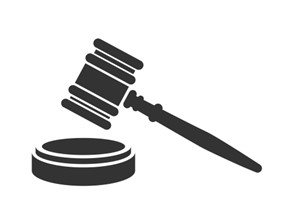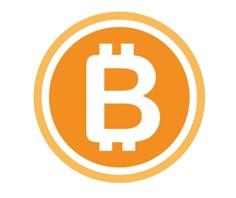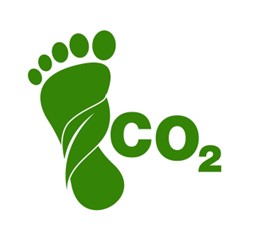- Blockchain’s potential to reduce food waste is also important from an environmental perspective
- Approximately ⅓ of food produced globally goes to waste each year due to inefficiencies in the supply chain - this represents a massive waste of resources (e.g. water, energy in greenhouses, fuel for transport) as well as food
- By reducing the number of intermediaries and increasing traceability (e.g. track conditions with IoT/RFID with data stored on Blockchain), the introduction of Blockchain in agri-food supply chains can reduce food waste and the associated environmental impact by enabling producers and retailers to more quickly identify and respond to incidences of contamination
- Smart food loss management systems and sale of surplus food (e.g. charities, hospitality, compost, biogas etc)
- Pressure from consumers and investors have prompted many agrifood companies to make ambitious public commitments and pledges(e.g. zero deforestation, 100% renewable energy, 100% recycled materials)
- However, complex and opaque global supply chains can make it difficult even for companies with good intentions to implement their commitments and demonstrate measurable results
- Inability to meet environmental commitments damages a company’s credibility and reputation
- Third-party certifications as a solution? 1) Confusing proliferation, 2) Greenwashing, 3) Audit fraud, 4) Expensive
- Blockchain as a way to demonstrate fulfilled commitments/an alternative to third-party certification: transparency, verifiable supply chains, and trust
*Note: role of governments and regulatory bodies key to holding companies accountable - consumer demand may be an insufficient motivator on its own
CASE STUDY: FISHING INDUSTRY
Video: Atea + IBM Food Trust
- The fishing industry is often associated with unsustainable practices such as overfishing which pose a serious threat to marine conservation
- Use of Blockchain technology to support more sustainable fishing practices
- Example: Atea and IBM Food Trust
Other examples of Blockchain uses for sustainable fishing:
- World Wildlife Fund (WWF)
- 2018 pilot programme, blockchain in the Pacific Islands’ tuna industry
- Aim to stamp out illegal, unregulated and unreported tuna fishing, as well as unfair labour practices
- Result: launch of online platform, OpenSC, which uses blockchain to verify sustainable production, track food along the supply chain and help people to avoid illegal, environmentally-damaging or unethical products
Other examples of Blockchain uses in sustainable fishing:
- FishCoin
- Open-source, decentralised Blockchain platform designed to incentivize data sharing
- Fishcoin app: enables fishers to sell information about their catch to potential buyers. When a buyer decides to purchase the data, the fisher is immediately rewarded with cryptocurrency tokens (FishCoins), which can be redeemed for e-vouchers, mobile plan minutes, credit towards utility bills, or direct remuneration where applicable on a country by country basis
LIMITATIONS OF ENVIRONMENT-CENTRIC SOLUTIONS
- Blockchain can offer radical environmental transparency - but not all agrifood actors may want this
- Producers also have incentives not to disclose information - current lack of regulation, high expenditure, competition, reputational damage
- Selective information sharing - disclose only positive aspects while ignoring the negatives
- To encourage greater transparency (using Blockchain or otherwise), governmental and societal pressure is crucial
- Question surrounding the sustainability of Blockchain technology itself?
- Most well-known Blockchain consensus mechanism: Proof of Work (PoW)
- PoW often requires high levels of computational power and, consequently, high levels of energy consumption
- 2022, Bitcoin’s estimated carbon footprint was comparable to country-level emissions of Greece
LIMITATIONS OF ENVIRONMENT-CENTRIC SOLUTIONS
Possible solution: alternatives to PoW? Many alternatives have been developed, here are two of the most commonly used:
- Possible solution: alternatives to PoW? Many alternatives have been developed, here are two of the most commonly used:
- Proof of Stake (PoS) - rather than solving computational problems to verify transactions, validators are selected to verify transactions = lower energy consumption than PoW
- Validators chosen based on the amount of stake they have in the network
- Disadvantage: potential problem of monopolisation
- Proof of Authority (PoA) - like PoS, transactions are verified by validators who are chosen based on their trustworthiness = lower energy consumption than either PoW or PoS
- Disadvantage: centralised consensus mechanism
SELF-LED EXERCISE
Topic: The Sustainability of Blockchain Technology
- Understanding the Complexity:
- Reflect on the statement: "The sustainability of Blockchain technology is a complex issue, and no version of Blockchain so far is without its drawbacks, though the technology is continuously evolving."
- Form Your Opinion:
- Spend 30 minutes thinking about whether you consider Blockchain a sustainable technology.
- Decide whether your stance is YES (sustainable), NO (not sustainable), or DON’T KNOW (unsure).
- Document Your Initial Stance:
- Write down your initial stance and the reasons for your opinion.
- Consider Different Perspectives:
- Read articles, watch videos, or research online to understand various perspectives on the sustainability of Blockchain technology.
- Take notes on arguments that support and oppose the idea of Blockchain being sustainable.
- Self-Debate:
- Imagine you are participating in a debate. Write down arguments for both sides (YES and NO) as well as considerations for being unsure (DON’T KNOW).
- Reflect on Persuasive Arguments:
- Reflect on which arguments you find most convincing.
- Consider whether any of the new information changes your initial stance.
- Document Any Changes in Your Opinion:
- If you change your stance, write down the argument that most convinced you to change your mind.
- Summarise your final stance and explain why you hold this opinion after your research and reflection.






